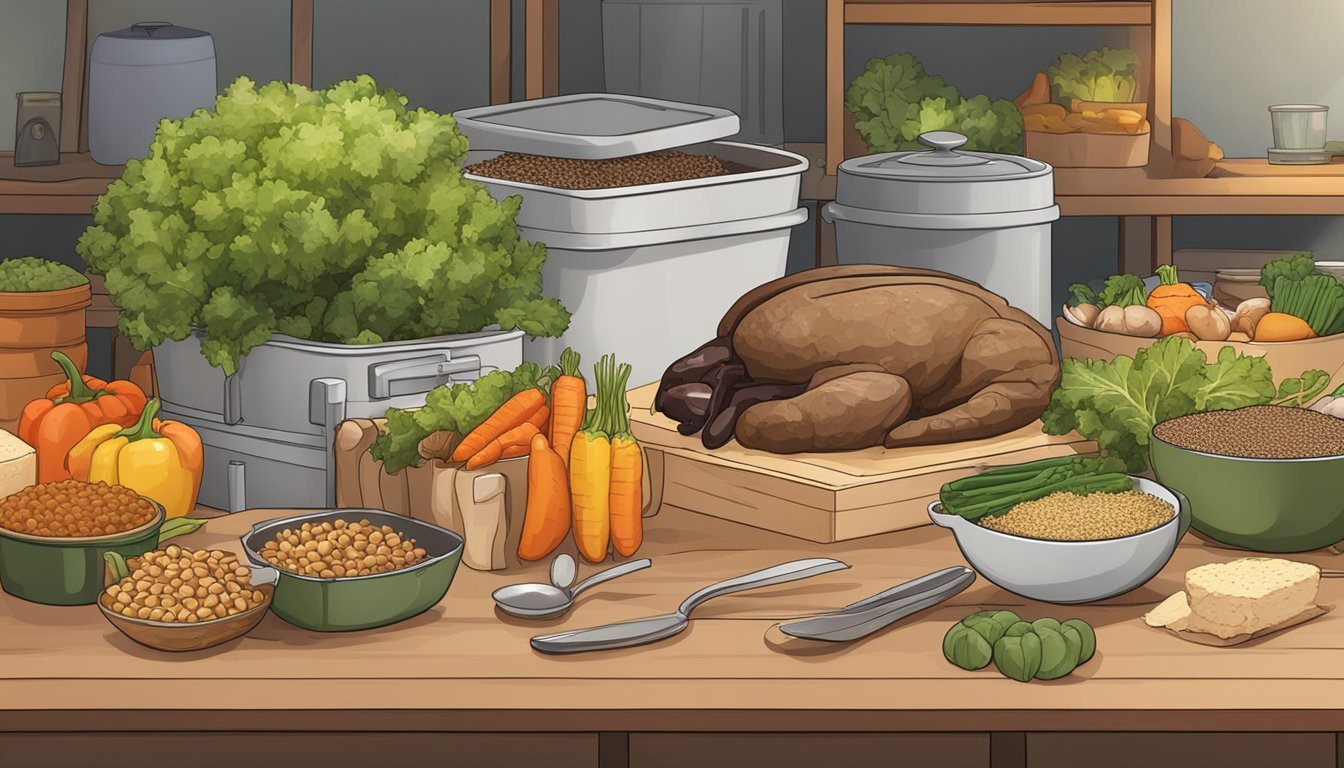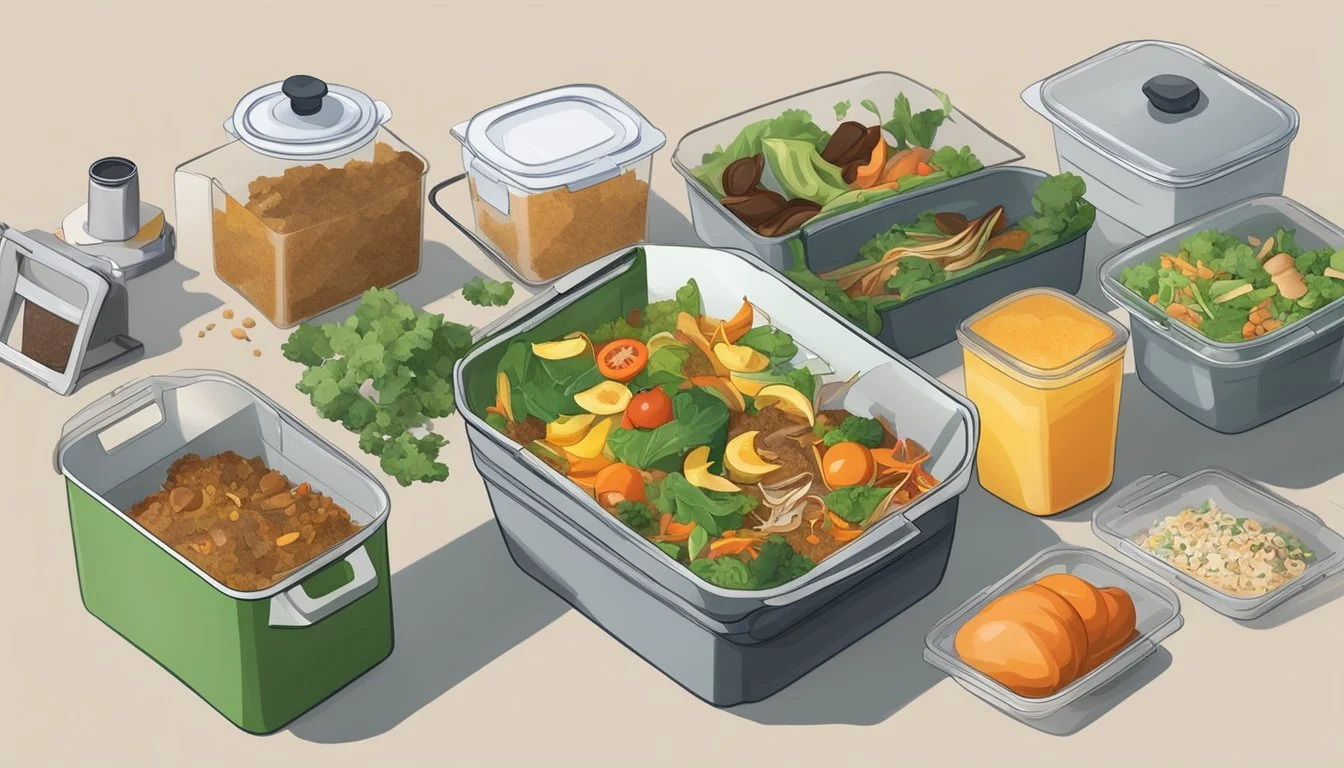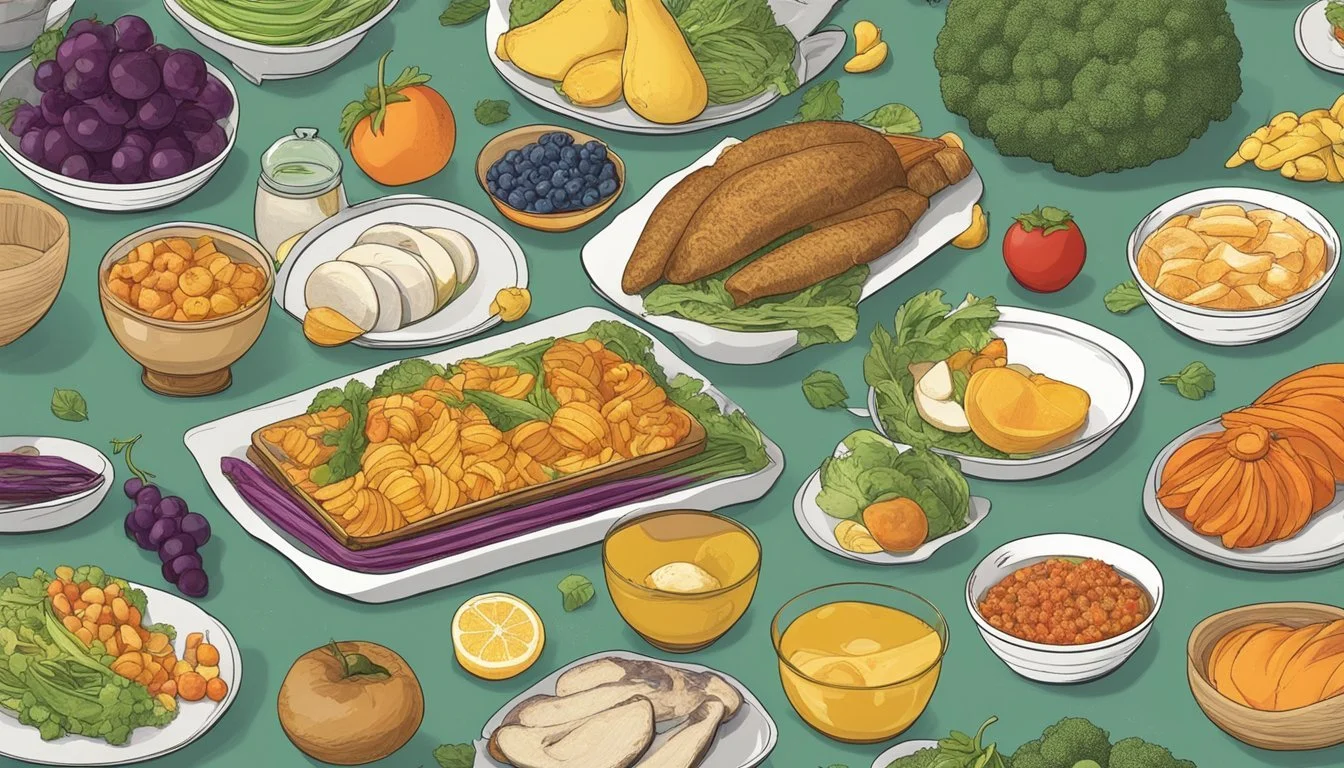How to Make the Most of Leftovers and Reduce Food Waste
Smart Strategies for Your Kitchen
Reducing food waste is an essential step towards sustainability, as it not only conserves resources but also mitigates the environmental impact of excess food ending up in landfills where it contributes to climate change. Making the most of leftovers is a practical approach to food waste reduction. By transforming leftovers into new meals, individuals contribute to a more sustainable food system. This approach aligns with the eco-friendly lifestyles many are striving for, helping to reduce the overall carbon footprint associated with food production, transportation, and disposal.
Home cooks can play a significant role in reducing food waste by creatively repurposing their leftovers. Utilizing leftovers in dishes such as coconut rice bowls, wilted greens quesadillas, or crispy rice cakes not only adds variety to the diet but also lessens the need to purchase and prepare new ingredients. This practice supports the idea that food sustainability starts in the kitchen. Small changes, like incorporating leftover vegetables and proteins into a quiche (What wine goes well with quiche?) or using aquafaba—a byproduct of cooking beans—as a substitute for eggs in recipes like chocolate mousse, contribute significantly to waste reduction efforts.
At a time when food waste is recognized as a global issue with serious implications for both the environment and food security, the emphasis on the use of leftovers is pertinent. The repurposing of food scraps, such as using potato peels to make a savory snack, exemplifies the ingenuity required to achieve significant waste reduction. As households embrace these practices, they also save money on groceries, further incentivizing the shift towards a more conscious and intentional use of food.
Understanding Food Waste
Food waste is a significant environmental problem with direct implications on climate change. It incurs not only financial costs but also depletes natural resources and contributes to global greenhouse gas emissions. Understanding the scale and impact can guide more sustainable food management.
The Impact of Food Waste on Climate Change
Food waste contributes to climate change in several ways. When food ends up in landfills, it decomposes anaerobically, producing methane — a potent greenhouse gas with a much higher global warming potential than carbon dioxide. Methane emissions from food waste exacerbate climate change, creating a cycle of waste and environmental degradation. Moreover, all the energy, water, and resources expended in producing, processing, transporting, and preparing food that goes uneaten further inflate the food waste footprint.
Statistics and Facts on Food Waste in The United States
In the United States, the figures surrounding food waste paint a stark picture:
Financial Impact: The cost of wasted food reached approximately $428 billion in 2022.
Household Responsibility: Almost 48.2 percent of all food waste in the U.S. occurs at the household level.
Environmental Burden: The U.S. Environmental Protection Agency (EPA) reported that food loss and waste account for the equivalent annual greenhouse gas emissions of 42 coal-fired power plants.
Resource Waste: The water and energy lost to food waste could be harnessed to supply a multitude of households.
It is clear that reducing food waste is essential in the battle against climate change and the responsible stewardship of resources.
Strategies for Reducing Food Waste
Reducing food waste is multifaceted, requiring thoughtful planning, storage, and creativity. The following tactics are essential for individuals looking to minimize waste and maximize the use of the food they purchase.
Meal Planning and Grocery Shopping
One effective approach to reduce waste is to meal plan before heading to the grocery store. A well-structured meal plan should take into account the week's schedule and the number of meals to prepare, ensuring that only necessary items are purchased. Individuals should compile a grocery list that aligns with their meal plan and stick to it to avoid impulse buys that may not be consumed.
Buy What You Need: Quantities should match meal plan requirements.
Check Pantry: Review existing supplies to avoid duplicate purchases.
Proper Food Storage Techniques
Proper food storage can extend the life of perishables and reduce the risk of spoilage. Individuals should familiarize themselves with optimal storage methods for different types of food. For instance, some vegetables last longer when kept in a cool, dark place, while others might need refrigeration. Utilizing the freezer can preserve the longevity of food that won't be used immediately.
Cold Storage: Keep perishables in the fridge when appropriate.
Freezer Use: Freeze surplus items to extend their shelf life.
Creative Reuse of Leftovers
Leftovers present an opportunity for innovative culinary experiences. They can be transformed into entirely new dishes, which not only creates variety but also ensures that food is not wasted. If leftovers are not suitable for immediate reuse, they can be frozen for future meals or potentially used for compost if they’ve gone past the point of safe consumption.
Repurpose Leftovers: Create new meals such as casseroles or stir-fries.
Composting: Convert food scraps into nutrient-rich soil amendment.
By integrating careful meal planning, attentive grocery shopping, diligent food storage, and inventive use of leftovers, individuals are well-equipped to significantly reduce food waste.
Food Preservation and Storage
Maximizing the shelf life of leftovers through proper food preservation and storage not only reduces waste but also ensures the quality and safety of the food. Two effective methods are freezing and canning, both of which have distinct techniques and impact on food quality.
Freezing and Its Impact on Quality
Freezing is ideal for extending the shelf life of leftovers while maintaining nutritional content. However, it may alter the texture of some foods. To freeze correctly:
Use leak-proof containers to prevent moisture loss and protect the flavor.
Label and date leftovers to track storage time and consume them within an appropriate period.
A general guideline for frozen leftovers is to use them within six months for best quality.
To prevent freezer burn, ensure air is removed from packaging before freezing.
Canning and Pickling Basics
Canning preserves food for extended periods and involves sealing it in sterilized jars to prevent spoilage. Two primary methods are:
Water Bath Canning
Suitable for high-acid foods like fruits, pickles, and tomato-based sauces. (What wine goes well with tomato-based sauces?)
Jars are submerged in boiling water for a certain time, specified in recipes.
Pressure Canning
Necessary for low-acid foods such as meats and vegetables.
Uses a specialized pressure canner to achieve higher temperatures to ensure food safety.
Pickling is a form of canning where food is stored in an acidic solution, usually vinegar, which inhibits bacterial growth. Pickled foods should maintain their quality for up to one year when stored in a cool, dark place.
Remember to always consult up-to-date guidelines for specific times and temperatures to ensure the safety and quality of preserved foods.
Transforming Leftovers into New Meals
Leftovers provide an excellent opportunity to get creative in the kitchen and craft delicious new meals. This section outlines specific recipes that can bring new life to familiar foods and gives guidance on incorporating a variety of leftovers into these dishes.
Comprehensive List of Recipes Using Leftovers
Chicken Transformation Ideas:
Taco Soup: Utilize leftover chicken to make a quick taco soup by adding beans, corn, and taco seasoning.
Chicken Caesar Salad: Refresh day-old rotisserie chicken into a Chicken Caesar salad by tossing it with romaine lettuce, croutons, and Caesar dressing.
Vegetable Renewal Recipes:
Vegetable Stir-Fry (What Wine Pairs Perfectly With Vegetable Stir-Fry?): Stir-fry leftover vegetables such as broccoli stems and cauliflower with soy sauce and serve over leftover rice for a new meal.
Broccoli Stem Slaw: Shred broccoli stems and mix with a tangy vinaigrette for a crunchy side dish.
Bread-Based Concoctions:
Bread Pudding: Stale bread can become a sweet or savory bread pudding with the addition of milk, eggs, and either sugar or cheese and herbs.
Revamped Pasta and Rice:
Fried Rice: Transform leftover rice into fried rice by sautéing with eggs, peas, and shredded carrots.
Pasta Frittata: Mix leftover pasta with beaten eggs and bake until set for a pasta frittata.
Bean and Beef Creations:
Chili: Combine leftover beef with beans, tomatoes, and chili spices to make a hearty chili.
Burritos: Wrap leftover beans and rice in a tortilla with cheese for an easy burrito option.
Seafood Solutions:
Salmon Cakes (What wine goes well with salmon cakes?): Flake leftover salmon and combine with mashed potato to form salmon patties, then pan-fry until golden.
Other Ingenious Ideas:
Ham and Cheese Quiche: Chop leftover ham into a quiche filled with eggs and cheese.
Potato Pancakes: Use mashed potatoes to create savory pancakes, perfect for breakfast or a side dish.
How to Incorporate Different Types of Leftovers
When it comes to incorporating various types of leftovers into meals, one should consider the texture and flavors that can complement the existing ingredients. For instance:
Proteins, like chicken or ham, can be added to salads, soups, or pasta to enhance their nutritional value.
Starchy Leftovers, such as rice or mashed potatoes, work well as a base for fritters, cakes, or can be mixed into doughs for added bulk and flavor.
Vegetables should be considered for their versatility; they can be roasted for a concentrated flavor, pureed into soups, or diced for salads and slaws.
Eggs are a binder and can transform disparate leftovers into cohesive frittatas, omelettes, or pancakes.
Remember to always ensure that leftovers are stored properly and safe to consume before using them in new recipes.
Nutritional Advantages and Meal Balance
Creating meals from leftovers does not mean compromising on nutrition. In fact, it offers an opportunity to balance your diet with a mix of fresh and previously-cooked ingredients, each bringing their own set of nutrients.
Balancing Leftovers with Fresh Ingredients
When integrating leftovers into new meals, one can enhance nutritional value by adding a variety of fresh ingredients. For example, if one's leftovers include roasted vegetables, they can add a serving of fresh greens to incorporate more fiber and vitamins into the meal. Doing so not only refreshes the dish but also helps in achieving the dietary guideline of half a plate of fruits and vegetables recommended by experts like those at the Harvard T.H. Chan School of Public Health.
Protein leftovers: Add fresh salad or steamed vegetables.
Carbohydrate-rich leftovers: Pair with lean proteins like grilled chicken or fresh tofu.
Vegetable leftovers: Complement with whole grains or a portion of fresh fruit.
Ensuring Nutritional Quality in Leftover-Based Meals
Consider the nutritional balance of the original meal to ensure that the leftover-based meal remains nutrient-dense. If the original dish was high in sodium or saturated fats, one might balance it out by incorporating fresh ingredients that are low in these elements. It’s also important to think about the variety of food groups represented in the leftovers. To illustrate, one could add fresh whole grains or a source of lean protein to leftover vegetables to create a more complete and nutritionally diverse meal.
Grains: Opt for whole grains like brown rice or quinoa to add fiber.
Protein: Include a variety of proteins such as legumes, nuts, or eggs to ensure a good intake of essential amino acids.
Fats: Use healthy fats like olive oil or avocados to add heart-healthy monounsaturated fats.
By thoughtfully combining leftovers with fresh ingredients, one can repurpose meals without sacrificing taste or nutritional integrity.
Minimizing Kitchen Waste
Effective kitchen waste minimization involves the conscientious use of produce and the innovative recycling of food scraps into useful culinary ingredients. These practices not only cut down on waste but also contribute to a sustainable kitchen environment.
Utilizing 100% of Produce
One should strive to use every part of the produce they purchase. For instance, broccoli stems can be shredded for slaws or stir-fries, while carrot tops are excellent for making pesto. Vegetable peels, often discarded, are rich in nutrients and can be incorporated into soups and salads if cleaned properly.
Potato Skins: Can be baked with olive oil and seasoning for a crispy snack.
Citrus Zests: Add flavor to marinades, desserts, or homemade cleaning agents.
Making Stocks and Broths from Scraps
Turning kitchen scraps into nourishing stocks and broths is a productive way to decrease waste. A chicken carcass, normally thrown out, is the backbone of a rich, homemade chicken stock. Vegetable scraps like onion skins, carrot ends, and celery leaves also contribute depth to broths.
Stock preparation steps:
Collect Scraps: Keep a freezer bag for storing bones, meat trimmings, and vegetable peels.
Cooking: Simmer the scraps in water with seasoning for several hours.
Straining: Remove solids to leave a clear, flavorful liquid.
Kitchen waste can be transformed into compost if making stock is not an option. Composting not only reduces waste but also creates nutrient-rich soil amendments for gardening.
Economic Benefits of Reducing Food Waste
Reducing food waste significantly impacts one's budget and optimizes the use of available food resources. By focusing on leftover food, individuals and households can mitigate unnecessary expenditures and support a more sustainable food supply.
Cutting Costs on Groceries
Personal Savings: Carefully utilizing leftovers can lead to a reduction in grocery bills. On average, a family of four can prevent nearly $1,500 per year from being wasted.
Buy What You Need: Planning meals and purchasing only necessary items decreases the chances of excess food that becomes waste.
Efficient Purchase Habits: Buying in bulk can be cost-effective, but only if one can properly manage and consume the excess before it spoils.
Maximizing Food Resources
Waste Avoidance: By consuming more of what they purchase, households directly contribute to reducing the volume of food waste.
Improving Food Supply Chain: Investments in better refrigeration techniques could lower the amount of wasted food in the developing world, thus enhancing overall food security.
Community Initiatives: Local programs that encourage the sharing of surplus food can decrease the amount of waste while ensuring that those in need have access to resources.
Innovative Cooking Techniques
When it comes to leftovers, innovative cooking techniques can breathe new life into once-forgotten dishes, transforming them into exciting culinary experiences. By creatively repurposing ingredients, families can not only enjoy fresh flavors but also contribute to reducing food waste.
Using Leftover Ingredients in Baking
Incorporating leftovers into baking can lead to delicious and unexpected results. Here are specific ways to do so:
Bread Pudding: Stale bread need not go to waste. Cube the bread and bake it with a mixture of eggs, milk, sugar, and spices. Add mix-ins like dried fruits or nuts for added texture and flavor.
Quiches and Frittatas: Surplus cooked greens, pastas, and other vegetables make excellent additions to egg-based dishes like quiches and frittatas, providing a nutritious and hearty meal.
Creating Unique Condiments and Sauces
Leftover herbs, vegetables, and other ingredients offer an opportunity to concoct fresh, homemade condiments and sauces:
Pesto: Blend leftover herbs such as basil with garlic, nuts, Parmesan cheese, and olive oil to create a vibrant pesto that's perfect for pasta dishes.
Quesadilla Sauce: Enrich your quesadillas with a sauce made from pureed leftover avocado or corn. Season appropriately to enhance the flavor.
With these innovative techniques, one has the ability to not only minimize food waste but also to enrich the family's dining experience with freshly crafted recipes.
Sustainability Practices Beyond the Kitchen
Effective food waste reduction extends beyond personal kitchen habits to involve broader community and personal actions. These strategies contribute to a sustainable food system and address climate change at a systemic level.
Community Initiatives for Food Waste Reduction
Communities can play a pivotal role in reducing food waste. Local governments and organizations are initiating compost programs that allow citizens to deposit their organic waste for conversion into nutrient-rich soil. This not only diverts waste from landfills but also enriches local gardens and promotes sustainable agriculture. Additionally, food banks and donation centers provide platforms for restaurants and supermarkets to donate surplus food, ensuring it feeds people, not landfills.
Compost Programs: Communities implement and encourage the use of compost bins and facilities.
Donation Networks: Efficient systems to redistribute surplus food from local businesses to those in need.
Personal Contributions to a Sustainable Food System
Individuals have the power to influence the sustainability of their food systems. One can engage in educational programs to raise awareness about food waste and learn about sustainability. Personal actions include choosing locally-sourced, seasonal ingredients to reduce transportation emissions and supporting farmers' markets and community-supported agriculture. Supporting local ecosystems in this way not only lowers one's carbon footprint but also bolsters the local economy and food security.
Educational Outreach: Attending and supporting workshops or campaigns focused on sustainable living.
Local Choices: Opting for local produce and proteins to minimize transportation-related emissions.
Citizens are encouraged to remain aware of the impact their food-related choices have beyond their households, participating actively in both community initiatives and personal lifestyle adjustments. Each action taken contributes to the broader goal of offsetting climate change and enhancing sustainability.






